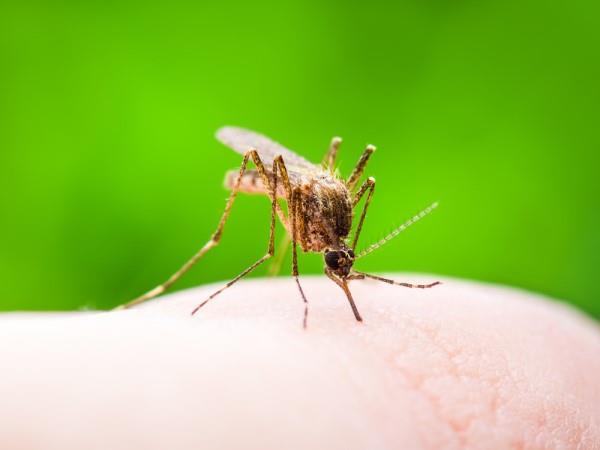
New research shows impacts of malaria in pregnant women in Papua and how to beat the disease
This year's theme for World Malaria Day, April 25, is 'Ready to Beat Malaria'. This article aims to shed a light on malaria in pregnancies and how it will affect babies.
Malaria in pregnancy poses substantial risks to mothers and their babies. Pregnant women are the most vulnerable population because they have a bigger risk of getting infected by malaria compared to male adults.
One in four people in Indonesia lives in areas with a high risk of contracting malaria. In 2016, malaria killed 161 people in Indonesia. Globally, the disease killed 445,000 people in 2016.
There are only few reports on the impact of malaria infection in pregnancy in Indonesia and there is little data on the number of pregnant women with malaria in the country. Our team at the Eijkman Institute has tried to fill this gap by studying the effects of infection by the malaria parasite, Plasmodium falciparum, in pregnant women and their children in Timika, Papua, a province with high rates of malaria infection. The study also attempts to identify a correlation between malaria infection in mothers and the health of their babies.
What do we know about infection in pregnancy?Symptoms of malaria in pregnant women vary, depending on their transmission level and the women's immune status. In sub-Saharan Africa , malaria in pregnancy is mostly due to the infection of parasites known as Plasmodium falciparum. In Asia-Pacific and South America , infection by Plasmodium vivax parasites mostly occurs.
When Plasmodium falciparum infects red blood cells, the parasites can accumulate in the placenta as their way to avoid host immunity.
Studies have shown that antibodies protect women against malaria infection. Other studies indicate that women with their first pregnancy are more susceptible to malaria infection than those who have been pregnant several times as the latter has higher antibody level that blocks the parasites.
In Asia and Africa, the latest data show that women with their first pregnancy are likely to have more of the parasites in their blood compared to those with multiple pregnancies.
A study demonstrated that antibodies played a role in improving the condition of the babies from infected mothers.
This finding suggests that developing vaccines to target malaria in pregnancy is feasible. Even though several studies have found that antibody against Plasmodium falciparum infection in pregnant women will reduce the risk of having poor birth outcomes, such as still birth and low birth weight, other reports have suggested that this may not always be the case due to different antibody responses.
High vs low endemic regionThe 2017 report from the World Health Organisation (WHO) and earlier research indicated that in a high endemic region, where malaria infection is common, immunity to the disease is high.
The report also stated that some infections occurred with no symptoms. But even with no symptoms, the parasites may still exist in the placenta. This can cause anaemia in pregnant mothers and low birth weight for first babies.
In a low endemic region, the pregnant women's immunity against the disease is lower than those in high endemic areas. This means pregnant women in a low endemic region face bigger risks of having severe anaemia and other adverse outcomes such as stillbirth and premature births.
The eastern part of Indonesia remains a high endemic area for malaria. The latest studies in Timika found that malaria infection can lead to maternal anaemia, premature deliveries, stillbirths and low birth weights. Meanwhile, drug resistance and lack of preventive steps, such as providing bed nets and anti-mosquito sprays, have contributed to the worsening effects of malaria infection in pregnant women.
Findings in PapuaFor our research in Papua, we collected blood samples of pregnant women and their placental sections to study their antibody response to malaria. We have identified a number of factors that contribute to malaria cases in pregnant women.
Our research shows consistency with previous findings that conclude that women in their first pregnancy have lower immunity than women with multiple pregnancies, making the former more susceptible to malaria.
Analysis of placental sections shows approximately 40% of women with parasites detected in their bloodstream harbour no parasites in their placentas. This means that finding parasites in the bloodstream does not indicate infection in the placenta.
Interestingly, our preliminary data suggest that a high level of parasites in the bloodstream has caused low birth weights in babies. The high number of parasites in the blood is, however, not always associated with parasite accumulation in the placenta.
These results suggest that precautionary steps are needed for pregnant women with parasites found in their bloodstream to minimise risks of babies with low birth weights. Treatments with drugs should aim to reduce the number of the parasites in their blood.
Next stepsIndonesia has introduced integrated efforts to reduce the adverse outcomes of malaria for mothers and their babies. These include distributing bed nets and providing prompt treatments for pregnant women.
Recently, scientists from the Eijkman Institute, the Timika Research Centre and Liverpool School of Tropical Medicine in the UK studied the impact of malaria screening and treatment on infected pregnant women.
We are still waiting for the results and plan to translate these into practice so the National Malaria Control Program can adopt these findings in much-needed policies to fight malaria.
Further studies are needed to identify factors affecting the health of babies born to mothers infected with malaria. The studies are expected to help provide better treatments for these babies.
- Indonesia Malaria Pregancy Papua

Legal Disclaimer:
MENAFN provides the
information “as is” without warranty of any kind. We do not accept
any responsibility or liability for the accuracy, content, images,
videos, licenses, completeness, legality, or reliability of the information
contained in this article. If you have any complaints or copyright
issues related to this article, kindly contact the provider above.


















Comments
No comment